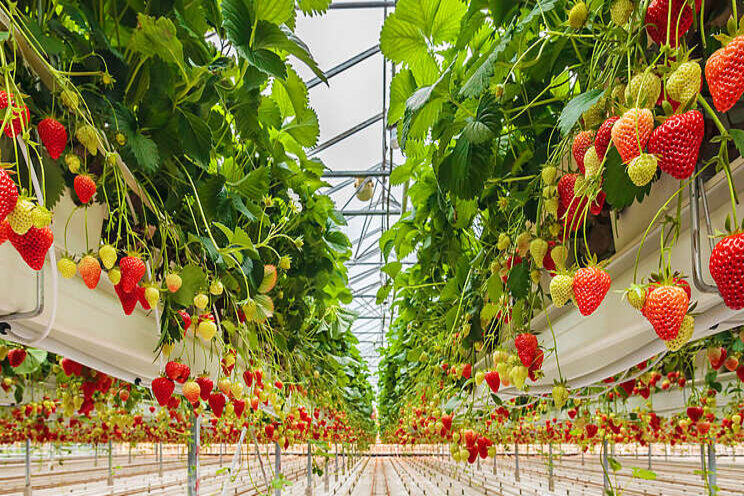Indoor farming funding heats up
Added on 29 April 2021

On the indoor side, the update comes in the form of details on a big vertical farm that the startup Plenty is building in Compton, California. The plans are impressive:
- The 95,000 square feet facility will be as productive as 700 acres of farmland, according to CNN. In terms of land use, that's more than 200 times as efficient.
- A crop of leafy greens in the facility can go from seedling to harvest in two to three weeks, Plenty co-founder Nate Storey told LAist last year. That's significantly faster than a regular outdoor growing schedule.
- The facility will supply 100 grocery stores when production begins later this year.
This activity is partly the result of a $140 million investment Plenty announced last year, just one of a slew of similar deals in the indoor ag sector. Close to $2 billion will have been invested in controlled environment agriculture (CEA) between the fourth quarter of 2020 and the middle of this year, estimates David Ceaser, lead agronomist at Agritecture, an indoor ag consulting firm based in Brooklyn. Most of that is going to large automated greenhouses, he adds, but vertical farm companies such as InFarm, Oishii and AeroFarms also have raised rounds.
"Consumer demand is fueling investment in CEA," Ceaser explained by email. "Consumers want consistent access to clean, high-quality produce, year-round. CEA production provides this and appeals to investors due to consistent revenue streams and reduced risk of interruptions compared to field-based production."
In addition to using less land, vertical farms require fewer chemical inputs and consume far less water than conventional farms. But remember that these facilities are, to an extent, only as green as the grid they plug into: Studies have shown that using fossil fuels to power vertical farms undermines the other environmental benefits. This isn't really an argument against indoor ag in general, just a reminder that we need to decarbonize our grid as fast as possible. (For more on how that's happening and how your company can get involved, check out GreenBiz Group's new VERGE Electrify event. It runs May 25-26 and is free to attend.)
Close to $2 billion will have been invested in controlled environment agriculture (CEA) between the fourth quarter of 2020 and the middle of this year.
Another notable deal saw $87 million funneled into Gotham Greens, which operates high-tech greenhouses. Some of that will be used to farm lettuce and herbs at a new 10-acre greenhouse in Solano County, California. The facility is co-located with the University of California, Davis, a notable agricultural research hub. Among other things, Gotham will collaborate with Davis scientists on efforts to develop new indoor varieties.
The Solano facility also feels like a statement of intent. Just a few hours drive south are the lettuce farms that supply much of the U.S. market. Gotham setting up shop in Solano is like an upstart grocery chain opening in a Walmart parking lot. It signals that the newcomer believes it can take the incumbent on at its own game.
Moving outdoors, the news is that PepsiCo has committed to spreading regenerative practices on 7 million acres of U.S. farmland — roughly the size of its entire agricultural footprint — by 2030. I'll state the obvious: 7 million acres is a lot of land. To put it in context, it's only two years since General Mills committed to transitioning 1 million acres to regenerative agriculture, which at the time felt like a step change in the spread of no-till, cover crops and other methods for restoring soil fertility. And the PepsiCo announcement comes just six months after Cargill unveiled plans to implement regenerative practices on 10 million acres. The momentum here is very clear. As well as building soil fertility, these moves potentially could lead to the drawdown of millions of tons of carbon dioxide every year.
Photo: Lettuce go inside. And so do strawberries as indoor farming rises.
Source and Photo Courtesy of Greenbiz
Source: Greenbiz
More news















